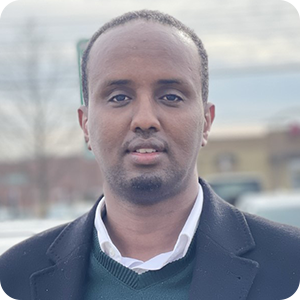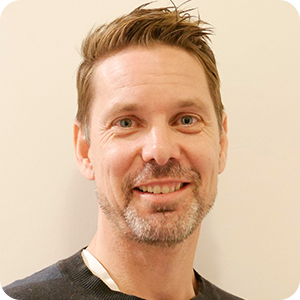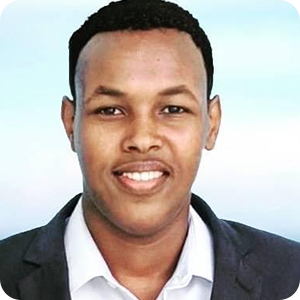Somalia is currently dealing with the worst drought in over 40 years, impacting over 8 million people in a country with a population of 16.3 million. More than a million Somalis have been internally displaced not only because of famine but also because of the Islamist militant group, al-Shabaab – the main cause of conflicts and insecurity in the region. We discussed the situation with several international experts who have worked in Somalia. Check out their experiences below.<
Key Takeaways:
- The severe drought in Somalia is affecting more than 1.5 million children who were likely to be acutely malnourished by the end of 2022.
- Seven out of 10 Somalis live in poverty, making Somalia one of the poorest countries in sub-Saharan Africa.
- Al-Shabaab is the largest militant organization fighting to oust the Somali government and the foreign military presence that supports it and which is responsible for the assassination of international aid workers, civil society activists, journalists, etc.
- According to experts who have served in Somalia, “one of the most important lessons for the international community is the importance of empowering local communities and governments to tackle their own challenges.”
DevelopmentAid: What was/is your role in Somalia exactly?

“I went to Somalia as a representative of the Danish Refugee Council (DRC) to coordinate the protection activities and gender-based violence interventions. Together with my colleagues, we monitored the implementation of DRC projects related to livelihood, gender equality, and child protection. I was tasked with writing and submitting weekly and monthly reports to the regional headquarters of the organization. Some of the reports included gender and livelihood proposals, concept notes writing, and design. In the process, I liaised with program coordinators and officers in Somalia to ensure the timely and effective implementation of various ongoing projects funded by UNHCR and ECHO. I also coordinated with the relevant entities such as UNHCR, UNICEF, international and local NGOs, and DRC colleagues, to carry out DRC’s intervention activities in Somalia.”

“My role in Somalia is that I was born and raised there. Because of the civil war, I had to leave the country and live in Kenya, Yemen, Uganda, and Malaysia. I eventually settled in the United States where I found my home. After I graduated from university, I worked with a non-profit organization and eventually progressed to work with the Ministry of Planning and International Cooperation of Somalia. I am not a foreigner who went to Somalia to work, but rather one of the locals who has experienced the challenges and struggles of living in Somalia first-hand.”

“Overall, 14 years of work of which five were based in the country itself and nine were spent coordinating from Nairobi (Kenya). I have worked with INGOs, the African Union and, for six years until 2011, I was the head of livestock program for the FAO as senior P5 staff.”

“I am the Country Director at Development Fund Norway, an INGO which has operated in Somaliland and Puntland since 2009. In this context, DFN manages programs in areas of resilience and rural development with a focus on food security/nutrition, climate change adaptation, economic empowerment and local governance.”
DevelopmentAid: In what way are climate and security interlinked? What are the risks for the Horn of Africa in particular?

“The climate and security are interlinked in many ways. The main link is associated with the thesis that environmental scarcity leads to conflict which in turn undermines security. For example, climate-related problems such as drought force individuals in Somalia to move from one place to another in search of grass or water. Many are forced to cross the Kenya border and head to refugee camps. Such movements create conflicts with neighboring communities that may arm themselves to defend their local resources. From my experience, individuals who are forced to move due to drought in search of water and grazing areas for their animals, trigger conflict. The ensuing climate-related grievances in many cases lead to local conflict. In countries like Somalia, South Sudan, and Sierra Leone, grievances caused by environmental scarcity have been some of the main causes of civil war. Another climate or environment-related issue that disrupts security is competition over scarce land resources. Land grievances are responsible for the ongoing civil conflict in the Eastern parts of the Democratic Republic of Congo in which thousands have been killed, displaced internally and across borders in Uganda. Such climate-related massive displacements and movement within and across borders threatens security in many ways and at many levels.”

“Climate and security are closely linked as the effect of both concepts affect humanity adversely. In the case of Somalia, the constant lack of adequate rainfall has caused drought and famine, causing massive displacements of the population. Hungry and desperate people are easy prey for Al-Shabaab who easily persuade them to join the militia. Also, when people migrate, those who have a terrorism record could migrate as well and the chances are high that they will practice their craft in the new location. This will affect the security architecture of the Horn of Africa due to the effect of climate in the region.”

“The Horn of Africa is a region that is particularly vulnerable to the effects of climate change. Droughts hit the region every year, causing widespread hunger and putting people at risk of death. These droughts also cause rivers to dry up which can lead to conflicts over access to water. At the same time, the lack of security and weak governance in the region make it difficult to implement laws that protect the environment. This leads to illegal logging and the burning of trees to make charcoal, further exacerbating the problem. In short, climate and security are interlinked in the Horn of Africa. The effects of climate change, such as droughts and water scarcity, can lead to conflicts and insecurity. Meanwhile, the lack of security and weak governance make it difficult to address environmental issues, leading to a vicious cycle that exacerbates the impacts of climate change.”

“Climate changes and the related effects are directly affecting Somali pastoralists and livestock (the majority, and in most cases, the only livelihood), increasing unpredictability of rain and pasture patterns, scarcity of water and forage availability during the dry seasons, forcing pastoralist to uncontrolled and contingency movement patterns that increases the chances of conflict and destabilisation among families and communities. The increasing level of poverty and the reduced income opportunities for young people offers wide and ever-increasing recruitment opportunities for terrorist groups. These phenomena are common to the Horn of Africa as most communities and populations across the Horn share the same way of living and depend on water, pasture and livestock mobility for their livelihood, food security, and nutrition.”

“Generally, the negative effects of climate change tend to be worse in communities that suffer from scarcity of resources and limited institutional and individual coping mechanisms. When those communities are situated in countries that, in addition, suffer from weak governance systems, there is a heightened risk in terms of human insecurity. In the Horn of Africa, Somalia exemplifies this dilemma: to all intents and purposes, 30 years of failed statehood, cyclical and intensifying drought conditions, violent extremism, ever-increasing humanitarian needs, and internal displacement clearly demonstrate the correlation between climate and security.”
DevelopmentAid: The Horn of Africa is a restive region because of internal conflicts and global power competition. How do you see the future of the region?

“The future of the Horn of Africa is likely to remain fragile as several factors continue to contribute to its economic, political, and social underdevelopment. Regional and international issues continue to plague the region as the bedrock of international conflicts. The Horn of Africa region has been a theatre for geostrategic competition between regional and international powers in the past and this will continue in the future. Instability, insecurity, and lack of trust among countries in the region continue to be major obstacles to achieving peace and security. For example, external forces continue to exploit the situation by making alliances based on geostrategic necessity rather than on shared values for the region. This has continued to create never-ending chaos in the region. Ethiopia continues to view developments in Somalia and Eritrea as hostile. Ethiopia opportunistically sought the moment to pursue suspected separatist militant rebel groups that offer material support in Somalia and part of Ethiopia. However, the situation in Somalia is improving with groups able to come together to bring peace and security. Foreign powers and neighbouring states meddling in the internal affairs of Somalia have contributed to and ultimately worsened the political instability of the country and subsequently the region. The Horn of Africa’s greatest challenge to peace and prosperity comes not only from a lack of hard security but also, and mainly, from a lack of soft security. Soft security relates to human vulnerabilities, extreme poverty, social injustice and discrimination, unjust inequality as well as socio-economic and political shocks. With severe climatic changes and environmental degradation and heavy dependence on agriculture and livestock, the region is prone to persistent extremes of severe droughts and flooding. At the same time, environmental resource scarcity continues to trigger constant intra-ethnic tensions. The message is that, unless such challenges are adequately addressed, ongoing cross-border conflicts over limited resources have the potential to turn into full-blown conflicts. These developments offer both hope and caution about the future of the Horn of Africa.”

“The Horn of Africa is a theatre of conflicts that are internal, ranging from South Sudan, Uganda, Democratic Republic of Congo, Sudan, and Ethiopia. Until leaders in this region imbibed the tenets of true democracy and the people become the reason for governance instead of self, these places will continue to face conflicts. Let’s not forget that some of these places have a lot of mineral resources which are a magnet to some developed countries to continue to stream into these countries and support or enthrone some of the leaders who will in turn grant them licences to mine the minerals to the detriment of the region. In essence, the minerals have become a source of conflict in this region. Powerful developed countries are involved in constant underhand dealings with some of the leaders of these regions to feather their own nests. Until the leaders become more nationalistic and patriotic to their people then the future of this region will continue to be bleak in terms of conflict resurgence.”

“The future of the Horn of Africa is difficult to predict as there are many factors at play that could influence the trajectory of the region. One of the key challenges facing the region is the ongoing conflict in Ethiopia, which has recently seen a deal reached between the government and the Tigray region. However, it remains to be seen how this agreement will be implemented and whether it will bring lasting peace to the region. Meanwhile, in Somalia, the situation is quite different. The country is currently at war with various terrorist groups and, while government forces and allied tribes are making progress in central Somalia, it is difficult to say how long it will take to eliminate the threat of terrorism. It is also unlikely that Somalia will see rapid progress in governance and security, as the country will require significant investment in order to rebuild its infrastructure and lay the groundwork for sustainable development. Overall, the future of the Horn of Africa is uncertain, and it will likely take many years for the region to achieve stability and prosperity.”

“The Horn of Africa has been historically prone to and affected by conflicts and this situation is likely to exacerbate further unless the joint efforts of central and local governments and the international community come together. These efforts ought to engage in a structural peace dialogue sustained by a number of structural reforms which put first in line the voice of the pastoralist, their visions, and needs to together find a way to promote pastoralism as the best economic and social model to exploit the semi-arid lands. I think that integrating pastoralists’ communities into a national and regional development model will help to achieve prosperity.”

“To a large extent, the fate of the region is contingent upon developments in Ethiopia. If the recently negotiated Cessation of Hostilities Agreement between the Government of Ethiopia and the TPLF (Tigray Peoples Liberation Front) holds and starts to generate results towards sustainable reconciliation and peace, there is hope for the region at large. However, the trajectory towards stabilization is not straightforward and will require a concerted effort from relevant governments in the Horn of Africa as well as from their partners.”
DevelopmentAid: Security clearly remains one of the most obvious challenges in Somalia. How effective is AMISOM’s campaign to extend security and control to the entirety of Somalia? What more is needed to strengthen AMISOM? Both in terms of the military and politically, how is Al-Shabaab affected by the growing military pressure and by the formation of the new government?

“AMISOM’s campaign to extent security and control to the entirety of Somalia has been relatively successful in the regions where its soldiers are welcome. AMISOM forces are not deployed in the Somaliland and Puntland parts of Somalia that are semi-autonomous and relatively peaceful. AMISOM forces have managed to support and train the Somali army to take over its state-building capacity. By all accounts, the presence of AMISOM on behalf of the African Union (AU) has helped Somalia to recover from the ravages of civil war and terrorism. However, to strengthen AMISOM, the AU should invite soldiers from more countries within IGAD which has a mandate to provide soldiers from its member countries. The largest contingent is currently from Uganda, Burundi, and Kenya, but more soldiers are required. That is the case because there are differences in military capacity between sub-regional groups like IGAD which is responsible for AMISOM. Such gaps have the potential to undermine AMISOM’s mandate. For example, within ECOWAS, Nigeria dominates. There is no such dominant country within IGAD and thus AMISOM. The tide against Al-Shabaab forces would change significantly with more soldiers on the ground even as AMISOM continues to train Somali soldiers in readiness for an eventual exit. The Union should also ensure that the Somali army under its training come from all major clans in Somalia to help to build trust as a national army. Militarily, while the recruitment of Somali soldiers is promising, such soldiers ought to be paid well and regularly to motivate them to fight Al-Shahaab. There is hope following the formation of a new government that has incorporated some programs to mitigate tension. Nonetheless, more should be done to promote inclusion across gender, clan, and region. The government should realize that there can be neither peace nor respect for human rights without minimum security and it must therefore do more to reverse state failure politically and militarily with the help of AMISOM.”

“Security concerns are the reason why AMISOM was established and deployed to Somalia. AMISOM started in Somalia in 2007 and has been the Africa Union’s longest, largest and most expensive, and most deadly mission ever since. I’d describe the mission as peace enforcement rather than peacekeeping since there is no peace to keep yet in the country. This mission has metamorphosed from AMISOM to ATMIS with a different mandate. Regions and states that were hitherto in the control of the militia are now in the control of the Somali Government having been recaptured by AMISOM, which is in constant pursuit of its mandate to push Al-Shabaab out of Somalia and ensure the presence of the Somali national government in all Somali states. ATMIS will require constant funding from the Union and its international partners to ensure that its core mandate is achieved and this will require more commitment from the PCC and TCC countries while carrying along the Somali Defence Forces. There is also the need for the Somali government to increase its collaboration with ATMIS for a seamless operation although Al-Shabaab is still a potent threat to Somalia peace judging by its more daring attack following the advent of the new government.”

“Security remains a major challenge in Somalia, with the terrorist group Al-Shabaab posing the greatest threat to the country and the world. AMISOM has played a critical role in helping Somalia to combat Al-Shabaab, particularly from 2007 to 2016. However, AMISOM’s campaign has been limited in recent years due to a lack of funding. Currently, AMISOM’s role is to support the Somali National Army in their fight against Al-Shabaab with artillery and logistics. However, AMISOM has no direct contribution to security in Mogadishu or other major cities in Somalia. In fact, the presence of weapons and the lack of control over them has made the situation in Mogadishu worse, as police and military personnel have been known to rob people in the streets. In order to strengthen AMISOM and its campaign to extend security and control throughout Somalia, it will require more funding and political direction. This will allow AMISOM to engage more directly in the fight against Al-Shabaab, which is crucial to ensuring the group’s eventual defeat. Despite the challenges, it is clear that the days of Al-Shabaab are numbered. The new Somali government is taking the threat seriously and has made significant progress in ousting the group from much of central Somalia. As the government continues to gain ground and exert its authority, it is likely that Al-Shabaab will continue to weaken and eventually be eliminated.”

“Despite the commitment and the long-term engagement of the security operations in Somalia, it has been proven and also made evident in other well-known contexts, that a mere military response will not suffice in the long term, and an intense and programmatic engagement with local partners, communities and customary institutions is needed to reach stability.”
DevelopmentAid: What are the consequences of ongoing civil conflict in Somalia for the rest of the world?

“The consequences are various. For some, the civil war is an indictment of the international system. As pointed out above, the civil war in Somalia has created an environment for external forces to take advantage of the situation to beef up their interests within the Horn of Africa. Such moves may lead to more conflict in the region. For example, Middle Eastern countries using their vast wealth, cultural, historical ties and influences are exploiting the situation of the cash-strapped Horn states to expand their regional influence while simultaneously bringing their long-standing feud with Iran to the region. These aggressive rivalries to counter each other’s influence in the Horn of Africa are turning the region into a theatre of war. The region is unpredictable as alliances in the region are mostly short-term. Countries/groups that fought together when facing a common enemy usually end up turning against each other when they have unresolved issues. The ongoing civil conflict has however illuminated Africa’s Union’s efforts to solve the problems on the continent through initiatives like AMISOM as a form of effective peacekeeping operations.”

“Sure, the consequences of civil conflict in Somalia that have become a permanent feature to the international community can better be imagined than experienced. The conflict has given the Somali national the sobriquet of a stateless person who is continually drifting from one refugee camp to another. The Dadaab camp in Kenya that houses most of the Somali refugees became a threat to Kenya’s security. The outflow of Somali nationals as refugees all over the world has become a global threat to security as some of the Somali nationals have been radicalised by Al Shabaab at home and can spring unpleasant “surprises” upon their new environment at any point in time.”

“The ongoing civil conflict in Somalia has had far-reaching consequences for the international community. One of the most significant impacts has been the creation of a large number of refugees who have fled Somalia and settled in countries around the world. In fact, you can find Somali people on all five continents, with even reports of a Somali family living in Buenos Aires, Argentina. Another major consequence of the civil war in Somalia has been the emergence of piracy on the Red Sea and the Indian Ocean. This activity has disrupted international trade and caused insurance premiums to rise for ships and vessels that use these waterways. In response, international forces have been deployed to guard against piracy and protect international trade. Furthermore, the civil war in Somalia has provided a breeding ground for terrorist groups which have used the country as a base to launch attacks on neighbouring countries. This has led to instability and insecurity throughout the region, with far-reaching implications for the international community.”

“The strategic position of Somalia, its crucial location to access the Aden gulf and the Suez Canal, has been on one hand a point of attraction for countries and on the other hand, an area of concern due to the potential to affect global stability and security in the entire region. There is no doubt that the next turning point in the international agenda will be the control of maritime ports in the Horn to ensure market access (in and out) from the continent (Africa) which is likely to become the future biggest market in terms of commodities and services and, in this regard, the potential of Somalia remains untapped.”

“Somalia has not seen stable statehood since the collapse of the Siad Barre regime in the early 1990s. The global geopolitical consequences of Somalia’s 30-year status quo are complex and multi-dimensional but the key consequences relate to the potential export of violent extremism emanating from Al-Shabaab influence in Somalia and beyond and continued refugee flows to neighbouring countries in particular which put a strain on existing socio-economic resources.”
DevelopmentAid: What lessons should the international community take away from this current humanitarian crisis?

“The obvious lesson for the international community is that without security more and more countries are likely to face such humanitarian crises made worse by climate and environmental factors. On the other hand, while the securitization in Africa to the war on terror after 9/11 has negatively impacted countries like Somalia, state failure can trigger several tragedies as witnessed in Somalia. African governments have enthusiastically embraced social development in Africa for various reasons. Countries that have managed to prevent terror groups like Al- Shahaab to reach their populations are more likely to avoid such humanitarian crises like the one unfolding in Somalia. The international community should therefore realize that a lack of capacity is a real concern and it should do more to reduce or manage conflict by addressing its likely causes that range from insecurity to underdevelopment. The other lesson is that, due to globalization, what happens in countries like Somalia or the Horn of Africa has an impact on international peace and security as they trigger humanitarian crises that eventually require billions to mitigate. Thus, state failure in Somalia has real consequences for both African and Western countries.”

“The international community has a lot to learn from the Somalia humanitarian crises. The ongoing fighting and insecurity have continued to thwart the effort made by the international community to help to achieve relief. The climate crises and the ripple effect of famine and insecurity are major lessons that can be learnt by the international community. The baggage of refugees thrust on the international community is worrisome in terms of the security implications. The Somalia crises have become a guinea pig in terms of experiments for the international community to learn from, on how to respond and treat humanitarian crises occasioned by internal conflict.”

“One of the most important lessons is the importance of empowering local communities and governments to tackle their own challenges. Rather than simply providing short-term assistance such as food aid, the international community should focus on providing support for sustainable solutions, such as supporting the agricultural sector and building dams to mitigate the effects of droughts and floods. Another key lesson is the need for international assistance to be delivered through local governments, rather than bypassing them and going directly to NGOs or other groups. This will ensure that aid is properly coordinated and used in a way that is most beneficial for the local population. Furthermore, the international community should avoid getting too involved in the political affairs of Somalia, and instead focus on supporting development efforts. This will help to create a stable and prosperous Somalia which in turn will benefit the region and the world as a whole. Overall, there are many valuable lessons to be learned from the present and past humanitarian crises in Somalia. By focusing on empowering local communities and governments, supporting sustainable solutions, and avoiding political interference, the international community can help to address the crisis and prevent similar situations from arising in the future.”

“Somalia is currently experiencing the worst drought in over 40 years. The March-May 2022 rainy season has been the driest on record in over 70 years, worse than the horrific drought-induced disasters that struck in 2011 and 2017. Current forecasts suggest that upcoming rainy seasons will fail as well. As a result, we are right now bearing witness to an unprecedented emergency which is ravaging drought-affected communities in the Horn. According to the UN, over 36 million people are affected, at least 20.5 million people face acute food insecurity and rising malnutrition and evidence of famine (IPC Phase 5) is emerging from parts of Somalia. Meanwhile, over 8.9 million livestock have died across the Horn, a resource which pastoralist communities rely upon for sustenance and livelihoods. Moreover, food prices continue to rise as a result of a combination of macroeconomic challenges, below-average harvests, and rising costs for both food and fuel on international markets, in part due to the war in Ukraine. Whilst the situation for marginalized communities continues to deteriorate in Somalia – mainly affecting pastoralists and smallholder farmers – it is time for us to consider droughts as a recurring long-term challenge that requires holistic/integrated development solutions. Here, we need to start treating cyclical droughts as a development problem requiring long-term investments, rather than as isolated humanitarian emergencies.”
Check out more than 200 jobs in Somalia in the development aid sector here.

